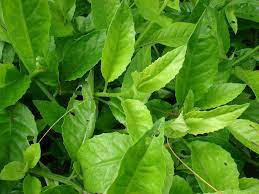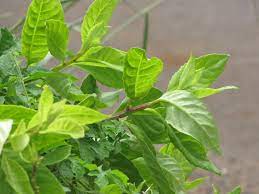Longevity Spinach, what is it?
Longevity spinach is not spinach. The native vine of Southeast Asia is Gynura Procumbens, a semi-succulent, light green plant. Typically, longevity spinach vines form a thick ground cover that creeps along the ground.
Occasionally known as a superfood, longevity spinach is an edible vegetable that is highly nutritious. This fruit is high in vitamin K, polyphenols, flavonoids, and other valuable nutrients. Medicinal properties make it popular among people. In addition to raw salads and smoothies, longevity spinach can be sautéed, steamed, or boiled for soups and stews.
The United States doesn’t have many pests that attack longevity spinach, but gardeners usually experience beetle or aphid damage.
Does longevity spinach produce seeds?

A longevity spinach plant can grow to a height of 12 inches, with a minimum height of 6 inches. The plant would bloom in the spring, with orange inflorescences growing on its axillary stem. As a result, the plant is an Angiosperm, meaning it is a seed-bearing dicotyledonous.
Benefits of Longevity Spinach
Chinese and other Asian cultures have long used longevity spinach for its medicinal properties. Analgesic, antibacterial, and anti-inflammatory properties make it popular with traditional healers. Longevity spinach’s proponents claim that it has a variety of medicinal benefits, including:
- Lower blood pressure
- Lowers blood sugar levels
- Reducing cholesterol levels
- Fever reduction
- Prevention of infections
- Removing bloodstream toxins
- Bringing relief to pain
- Stemming the spread of cancer
Despite the lack of scientific evidence that supports these claims, many people agree that longevity spinach is a healthy, tasty green that’s easy to grow. Longevity spinach also has a high protein content. According to Gardens All, a 3.4-ounce serving of dried leaves contains around 4 12.4 grams of protein. As a plant-based protein source, longevity spinach can be a valuable addition to a vegan or vegetarian diet.
Read More: Top Reasons To Visit Your Medical Centre And Tips For Prevention
How to Grow Longevity Spinach
It is possible to grow longevity spinach indoors and outdoors since they are hardy and grow well both ways. The roots of these plants trail up the ground when planted outdoors. They can be trimmed to look like bushes, or they can be clipped in containers.
Regarding light, water, and soil quality, longevity spinach requires the same nutritional requirements regardless of where they are planted. In addition, you need to consider the climate of your location.
Growing Habits of the Plant
The plant is a trailing vine with green stems that snap if bent quickly. It would help if you cut its tips regularly to make it grow as a bush instead. As it grows and gets older, the base thickens and turns brown. Leaf growth will be in the opposite direction, with older leaves growing to 6 inches in length. There are significant serrations on the edges of leaves, but they aren’t visible.
With its stem growing 15-20 feet long, the ground roots grow to the soil from parts of its stem that trail along. Even with nearby support, the stems will not grow tall without the right assistance. This is why it is a good ground cover. This plant grows rapidly as well. When it reaches half a meter tall, it will grow even faster until its leaves are ready to be harvested and eaten!
Indoor Growing: How to Do It?
Spinach thrives indoors in the same conditions as it does outdoors.
Soil recommendations
The best soil for growing longevity spinach is loose soil with a lot of drainages. In the event of poor drainage, your plant becomes soggy, leading to root rot. The soil should also have the right amount of moisture to prevent the roots from drying out.
It could prove challenging, but it would be helpful if you found the balance between soil type and quality. Thankfully, longevity spinach isn’t fussy about the type of soil it grows in. To grow a healthy crop, you should focus on getting rich soil and has adequate drainage. Consider adding tea leaves or coffee grounds to supplement it.
Although it can grow in dry and poor soil and cope with full sun, it grows very slowly.
Where Should It Be Placed?
- For your convenience, longevity spinach can be planted in pots. You should ensure that the pots you intend to use are at least 1-2 feet deep to allow roots to grow.
- You can grow 2-3 plants in one pot, but keep in mind that they may compete for nutrients and moisture. Overcrowding can cause your plants to become rootbound, which will prevent them from growing any more. Regularly thin them to prevent this.
- Outdoors, space multiple plants at 50 cm intervals, growing into dense mats after a few months. You don’t want them competing for nutrients!
When should it plant?
There are many garden suppliers where you can purchase longevity spinach. If you live in a state where they are hard to find, you might have trouble finding them. The products can, however, be purchased locally or online.
Temperatures below freezing are too cold for longevity plants. After planting, cover your plants with old sheets or frost cloths if you expect a late frost. The ground level, around the stems, should be completely covered and secured. Plants can also be moved indoors during freezing weather instead.
Usually, it blooms from mid-July to early August and is best planted in March. Again, it depends on your location, the temperatures there, and the frost and growth seasons dates.
How should I incorporate longevity spinach into my diet for medical benefits?
You can eat the young, slightly fuzzy leaves fresh in salads, smoothies, soups, stir-fries, or make tea with them. The taste is similar to that of spinach. Like okra, the cooked leaves become slightly viscous and are used to thicken soups, stews, and sauces. This can be used in any recipe that calls for spinach. Sandwiches can be made with it instead of lettuce. Celery stems can be substituted for crunchy stems. To make medicine and to eat the leaves. Spinach is used as a medicine for treating stomach and intestinal complaints (gastrointestinal, GI) and fatigue. Besides being used to build blood, it also stimulates appetite. Growing children and recovering from illness are some of its uses.
How to Take Care of a Longevity Spinach Plant?
Longevity spinach plants are easy to grow. Young lifespan green plants only need their leaves to be harvested when they are ripe; otherwise, they won’t spread from their original planting location. Additionally, pay attention to the coloring of the leaves; if they are becoming yellow, this indicates a lack of nitrogen, and you can remedy the situation by using a nitrogen-rich fertilizer, such as a good natural amendment. As the plant begins to develop healthily again, nourish it every three to four weeks.
Where to Buy Longevity Spinach?

We could easily take more cuttings and continue expanding the brood, but some resources of buying the longevity spinach are as follows:
- Purchase from Amazon
Gynura is sold on Amazon by some sellers. As usual, check the reviews.
- Buy seeds from Baker’s Creek – Rare Seeds
Baker’s Creek Rare Seeds are the best buying option of longevity spinach.
- Purchase from Wellspring Gardens for the best price
You can save the most money by purchasing Wellspring Gardens at wholesale pricing. However, once you’ve started with a few plants, it’s really easy to multiply those into many more.
Whether you’re growing or propagating, you’ll want to grow and spread your seed. The clippings of Procumbens make great host gifts for gardeners and plant lovers interested in edible medicinal plants.
Apart from this if you are interested to know about Health Benefits of Turkey Tail Mushroom then visit our Daily Bites category.
